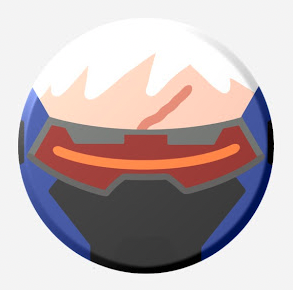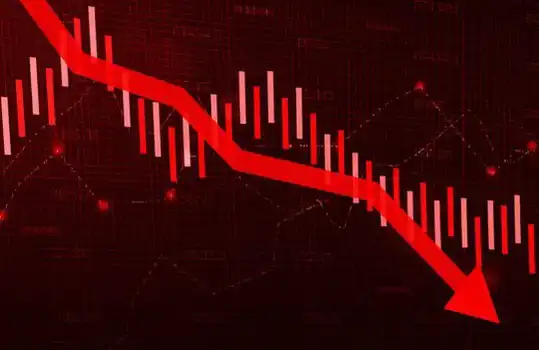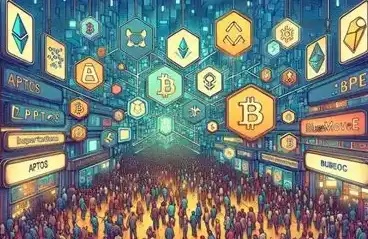What should we really focus on when Ethereum is hard forked?
Writing:0x76
As The date of The Ethereum PoS upgrade approaches, more than one team in The community has publicly announced that it will hard fork Ethereum when The Merge occurs, in order to preserve Ethereum's traditional PoW mining mechanism. (PoW chain tokens after fork will be collectively referred to as POW-Token in the following)
As POW-ETH futures trading was launched on some trading platforms over the weekend, the preparation work related to various forks was promoted. It can be said that the hard fork occurring at the same time as PoS upgrade was almost inevitable.
So, what impact will this fork have on the Ethereum ecology after the fork, and how should ordinary Ethereum users protect their assets in this fork, and even fight for arbitrage opportunities?
What do you think of the Ethereum hard fork
First of all, our basic point is that we don't think the fork will make much meaningful contribution to the Ethereum ecosystem. And given the history of the people who are leading this fork, and their level of technical preparation, this fork may not even really succeed.
Even so, I recommend keeping a level of attention to this hard fork. First, most Crypto users more or less hold some Ethereum assets, so if the hard fork can really succeed, how to deal with the free POW-token after the fork, is also a certain practical guidance significance of the topic.
Second, and I think more importantly, we can better understand the operating logic behind the PoW chain by observing the problems of the ecological project after the fork.
Therefore, the purpose of this article is not to publicize the farce of this fork, but to make a better summary and analysis of the phenomenon of "simultaneous fork of ecological project and public chain" that may appear for the first time.
What happens to the assets on the PoW chain after the fork?
1. Cross-chain assets
Cross-chain assets here refer to the generalized cross-chain occurring through the "lock-in casting" model, including the general cross-chain completed through cross-chain Bridges, as well as the generalized cross-chain such as charging to trading platforms and the issuance of centralized stablecoins. For the basic logic of generalized cross-chaining, the reader can refer to theWhen you do cross-chain, do assets really move?".
(1)Assets that entered Ethereum before the fork: go straight to zero
Due to the assets entering Ethereum, they essentially adopt the lock-in casting model, which is the redeemable certificate of the original assets issued in Ethereum. So the value of these certificates depends only on whether they can still be used to redeem the original property locked in the Treasury.
Therefore, after the forking of Ethereum, the redeemable certificate issued in Ethereum corresponding to such asset vault bifurcates into two identical versions, so the manager of the vault must actively choose which version of the forked version is true and which is false. The value of the unsupported version of the credentials goes straight to zero from the first moment of the fork.
And this kind of crossover assets occupy a very high market value in Ethereum, including but not limited to the centralized stablecoin USDT and USDC, as well as WBTC and renBTC that cross the chain bridge. Not surprisingly, the issuers of these cross-chain assets will all choose to support PoS versions of Ethereum after the fork, so the PoW forked versions of these assets will go straight to zero after the fork.
(2) Assets that exit Ethereum before the fork: Expect most to be permanently locked up in contracts
For ETH that cross from Ethereum to other chains before the fork, these ETH will also become the same number of POW-ETH after the fork, since the so-called "cross out" is actually locking the ETH into the Ethereum contract across the chain bridge and not actually leaving Ethereum.
But to unlock the POW-ETH again, you'd need to bring the WETH back in. At this time, ETH locked in the PoS chain can be unlocked smoothly due to the official support. However, for POW-ETH locked in the PoW chain, due to various reasons such as the front-end is no longer suitable and the team is no longer supported, many users will presumably give up directly due to the increased difficulty of operation. As a result, many Po-ETH are permanently locked in various contracts as sleeping assets.
The logic is similar to stETH. Assuming that the same lock-in casting logic was used when Lido received users' ETH and entered the Beacon Chain, the equivalent amount of PO-ETH corresponding to these STEths would also be included in the Lido contract. If it cannot be removed smoothly, it will also become a locked asset, and directly lead to the PoW version of stETH zero. (This part of the analysis is based on some guesses. Please correct any errors.)
(3)Assets in the trading platform: depends on the attitude of the trading platform
ETH that recharge (in the broader sense of cross-chain) to the centralized trading platform before the fork will receive the same amount of POW-ETH after the fork, since these ETH are hosted at the address of the trading platform.
Whether these assets are directly owned by the platform or returned to users in proportion is a matter of policy for each platform.
2. Loan agreement
Post-fork lending protocols on the PoW chain are expected to be the most disrupted DeFi infrastructure.
Because almost all loan agreements involve liquidation mechanisms, and accurate liquidation must rely on the precise quotation of the predictor machine. Therefore, whether lending protocols such as MakerDAO, Aave, and Compound can continue to operate depends mainly on whether the prediction machines they use can continue to operate on the PoW chain after the fork.
Most mainstream lending agreements today use either Chainlink or Uniswap as their primary source of quote information. Uniswap is less dependent on the outside world and can be assumed to continue operating according to a prespecified logic. Chainlink, on the other hand, had to be actively adapted by the official team to support the PoW chain after the fork.
According to current ChainlinkThe official notification, which will not support any PoW forked version of Ethereum. The decision, therefore, is basically a death sentence for the post-fork lending agreement. If the official team of these lending agreements is not interested in replacing the PoW forking agreement's prophecy machine, then the various assets locked up in it may not be taken out.
3.AMM
Compared with the loan protocol, the decentralized trading platform using the AMM model is a DeFi protocol that is truly self-consistent and can function normally without external machine input information.
Both Uniswap and Curve are expected to operate normally after the fork, and due to licensing restrictions on Uniswap V3, the PoW version of the fork is likely to be the only public chain other than Orthodox Ethereum to deploy the V3 contract.
For these DEX deals, of course, more risk will come from specific pools of capital. For example, the USDC-ETH capital pool before the fork will be quickly emptied by PoW version USDC holders who are about to go to zero after the fork. Therefore, holders of the corresponding LP market making position before the fork can also consider withdrawing the LP position as soon as possible to avoid volatile losses.
It doesn't matter if the fork doesn't work out, or if POW-ETH isn't worth much.
4. Small picture NFT
To be honest, for the vast majority of small image NFT projects, there really isn't any real difference in form between the bifurcated NFT version and the PoS canonical version. After all, for this type of NFT project, the real embodiment on the chain is a coin contract with a link to the image address.
Of course, what's probably more critical to the NFT ecosystem is how well Opensea will function after the fork. I really don't have much research on this, so I'll take a wild guess here. It's possible that the pre-fork order instructions will still work, but more importantly for the average user, the web front end used for interaction will support the PoS version of Ethereum directly.
Therefore, an important prerequisite for implementing all of the above logic is to have at least an interactive interface for ordinary users to interact with.
5. What about the front end?
Yes, having said all this, none of these projects' front ends will automatically fork into two versions when the main web forks. So at the very least, someone has to fork and debug the interface of these apps before the average user can interact with the apps on the PoW chain. Or, at the very least, fork a PoW version of the blockchain browser so that people can at least interact with the public chain via specific contractual instructions.
So who does all this important work? The official teams of these mainstream projects are probably not interested, but it is risky to expect Mr. Bao to get things done. With a month or so to go before the expected date of the fork, hopefully someone has warned him that he still has an important job to do.
What can the average user do?
According to the above analysis, if ordinary users want to maximize their own interests, they can theoretically adopt the following strategies. (Risk tip: the risk and difficulty of the operation is still quite large, not recommended blind interaction of small white users. In addition, this is only a theoretical analysis, and the real complex situation may be not small difference.
fork
• The primary objective of this phase of action is to prevent ETH from being locked into contracts after the fork.
• & have spent WETH that crossed over from the Ethereum main network crossed back to the main network;
• & have spent The coins that will return to zero after the fork can be pledged and lent to ETH first. This strategy may face relatively high interest rate before the fork, so it needs to be chosen carefully.
• & have spent Forks such as ETH are proposed from various DeFi protocols;
• & have spent Take out the position of "ETH- after fork to zero currency" in the AMM pool to avoid capricious losses;
• & have spent .
After the split
• & have spent While the USDT AMM pool is still available after many forks, sell these tokens for POW-ETH as soon as possible: this strategy has a high threshold for ordinary users, and may also run into gas WAR, MEV arbitrage, etc. If a fork does occur, a big battle is expected in the earliest blocks after the fork.
• & have spent Recharge POW-ETH after fork into a supported trading platform to sell: as long as we all agree, after fork can hit the dealer together (nonsense)
• & have spent The intrinsic value of most ecological tokens after fork will depreciate or even return to zero due to the failure of the normal operation of the agreement. There is a chance to remember to sell in time.
• & have spent .
Pay attention to asset safety
To be honest, if this fork is successful, what will happen in the chain after it is completely beyond the scope of individual rational prediction. So for the average user, the risk cannot be overemphasized.
Except for possible replay attacks after the fork. Conceivable points also include: fake wallet cheat mnemonic, fake webpage phishing, small online ETHW futures do not give withdrawal after fork, recharge can not be transferred to account, between different trading platforms to POW-ETH loss, transfer is not the same POW-ETH, and so on.
So you are busy picking up cheap at the same time, don't let people steal the home.
Can the bifurcated PoW chain achieve long-term development value?
As you can see from the above, although nominally this fork will inherit all the states and projects of Ethereum before the fork. But due to various problems, the final PoW version of the fork chain can inherit, will be a branch zero fragmentation of the Ethereum ecology.
It is doubtful how meaningful such ecological bifurcations are in practice.
In addition, for an ecological public chain, the core concept of its operation will also greatly affect the subsequent development of the ecology. So what are the advanced ideas of the team that led this fork?
Here are some excerpts from their promotional copy:
"In 2021, the first sign of evil:
In order to reduce the total supply of ether in circulation, the Ethereum team ignored its benefactor miners and released the EIP-1559 protocol. Miners, the original backers of Ethereum, have been burned up on the chain by the exploitation extortion of the new protocol. Thousands of miners have suffered huge losses.
2022, finally become a dragon:
Once The dragon slayer boy raised his knife again, forcing his benevolent miners to accept The Merge consensus, abandon Pow and embrace Pos fork. Not just to exploit the miners, pools and miners who nourish them, but to cramp their bones. Hundreds of millions of dollars of investment by miners will be wiped out, and it is frightening to see."
To be honest, this statement does not compare with Vitalik's understanding of blockchain, even in the most basic value scale of modern society, it is also not qualified.
After all, in modern society, no matter how great the differences in the division of labor between different market players, they are equal in personality status. In an open and fair market, people make deals according to rules, perform obligations under contracts and receive rewards.
However, in the above statement, the project team directly simplified the cooperation between miners and Ethereum to the relationship between nurturing and reward. It felt like it was just short of Shouting the slogan "Emperor, emperor and subject, father and son". This kind of thinking is not only not in line with the spirit of blockchain, it can even be said that it does not have the basic spirit of market economy.
The above paragraph of "Chinese flavor" very strong expression, let a person again think of the circle of Chinese projects do not cast the hidden rules. But in fact, the real conflict between them is not even the difference between Chinese and Western culture, but the fundamental difference between pre-modernity and post-modernity.
The more likely explanation, of course, is that the narrative is a way of targeting their audience, consciously or unconsciously. After all, groups that embrace specific narratives have repeatedly been shown to be the best cut of leeks within a circle.
Finally, let me conclude with a very popular passage in these two days:
"The people driving the Ethereum hard fork to keep the POW mechanism only want to make money, and many of the Kols leading this fork are notorious bad guys in China and advise people not to participate in the ETHW hype."
Welcome to join the official BlockBeats community:
Telegram Subscription Group: https://t.me/theblockbeats
Telegram Discussion Group: https://t.me/BlockBeats_App
Official Twitter Account: https://twitter.com/BlockBeatsAsia


 Forum
Forum Finance
Finance
 Specials
Specials
 On-chain Eco
On-chain Eco
 Entry
Entry
 Podcasts
Podcasts
 Activities
Activities
 OPRR
OPRR









